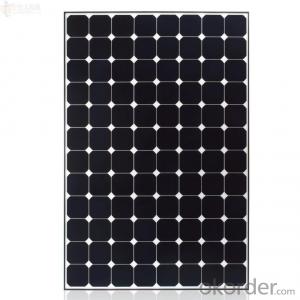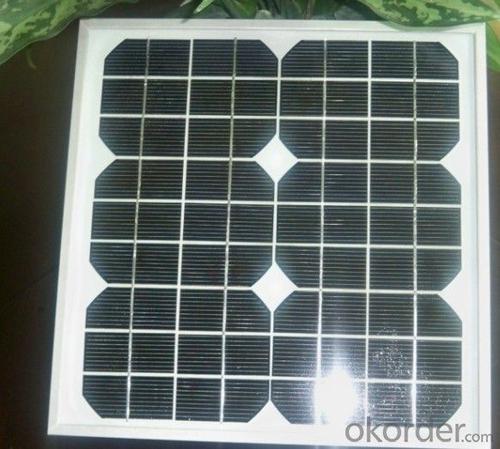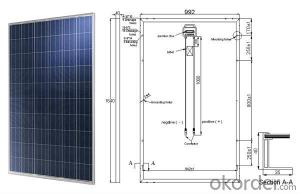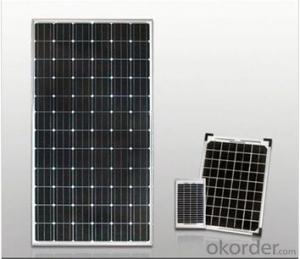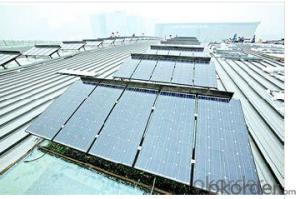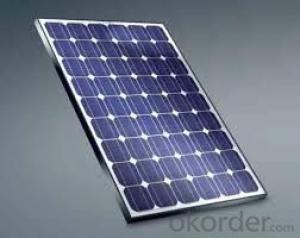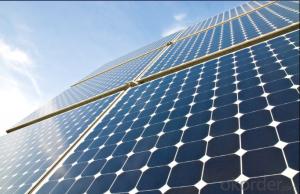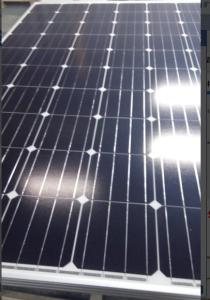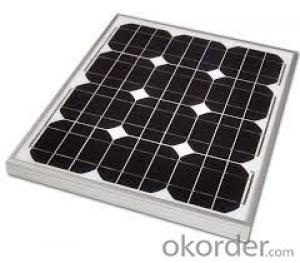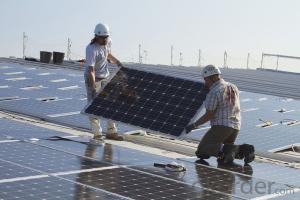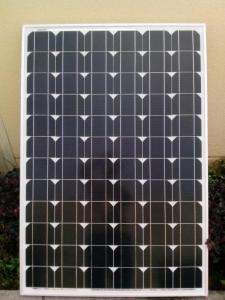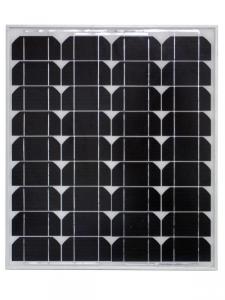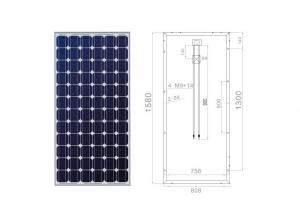Buy Small Monocrystalline Solar Panels Online - CNBM
- Loading Port:
- Qingdao
- Payment Terms:
- TT OR LC
- Min Order Qty:
- 10 set
- Supply Capability:
- 300000 set/month
OKorder Service Pledge
OKorder Financial Service
You Might Also Like
1.5W to 180W Monocrystalline Solar Panel
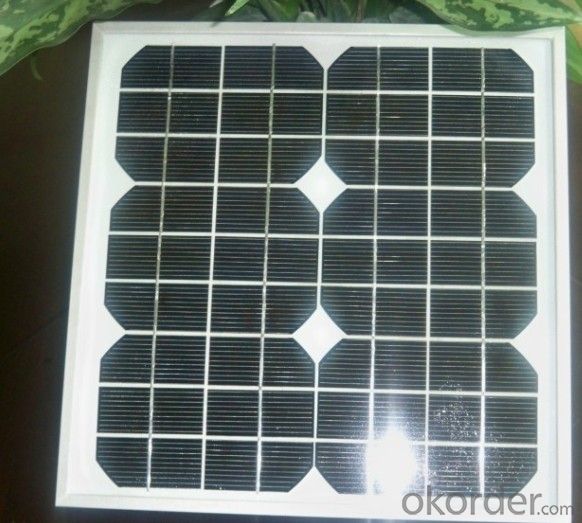
Quick Details
Place of Origin: | China (Mainland) | Brand Name: | CNBM | Model Number: | XRP-156M-250W |
Material: | Monocrystalline Silicon | Size: | 1620x992x40mm | Number of Cells: | 60 |
Max. Power: | 250w | Optimum Operating Voltage (Vmp): | 28.8V | Optimum Operating Current (Imp): | 8.68A |
Open Circuit Voltage (Voc): | 36V | Short Circuit Current (Isc): | 8.87A | Maximum Power at STC (Pmax): | 250W |
Operating Module Temperature: | -40 °C to +85 °C | Maximum System Voltage: | 1000 V DC (IEC) / 600V DC (UL) | Maximum Series Fuse Rating: | 15A |
Packaging & Delivery
Delivery Detail: | two weeks after order confirmation |
Features:
1) High Module conversion efficiency, through superior manufacturing technology
2) 0 to +5W positive tolerance for mainstream products
3) Certified to withstand high wind loads and snow loads
4) Anodized aluminum is for improving corrosion resistance
5) Anti-reflective, Highly transparent, low iron tempered glass
6) Excellent performance under low light environment
Benefit:
25-year performance warrant
10-year Product warranty
Electrical Characteristics:
Item No. | XRM-250W |
Optimum Operating Voltage (Vmp) | 28.8V |
Optimum Operating Current (Imp) | 8.68A |
Open Circuit Voltage (Voc) | 36V |
Short Circuit Current (Isc) | 8.87A |
Maximum Power at STC (Pmax) | 250W |
Cell Efficiency | 17.70% |
Operating Module Temperature | -40 °C to +85 °C |
Maximum System Voltage | 1000 V DC (IEC) / 600V DC (UL) |
Maximum Series Fuse Rating | 15A |
Power Tolerance | 0/+5 % |
STC: lrradiance 1000 W/m2, module temperature 25 °C, AM=1.5;
Best in Class AAA solar simulator (IEC 60904-9) used, power measurement uncertainty is within +/- 3%
Mechanical Characteristics:
No. of Cells | 60(6X10) |
Dimensions | 1640x992x40MM |
Weight | 20.0KGS |
Front | Glass 4.0 mm tempered glass |
Frame | Anodized aluminium alloy |
Temperature Characteristics:
Nominal Operating Cell Temperature (NOCT) | 45±2°C |
Temperature Coefficient of Pmax | -0.44 %/°C |
Temperature Coefficient of Voc | -0.33 %/°C |
Temperature Coefficient of Isc | 0.055 %/°C |
Refer to the Wmp range
Our factory can produce solar panel and solar module from 1.5W-290w (1.5w, 2.5w, 5w, 10w, 20w, 40w, 50w, 60w, 80w, 85w, 125w, 135w, 150w, 165w, 180w), according to customers requirement.
(A). Wmp range: 0.01W-6W, to be sealed with epoxy resin on PCB (printed circuit board), or to be sealed in plastic directly.
(B). Wmp range: 0.01W-15W, to be encapsulated with PET, on PCB (printed circuit board)
(C). Wmp range: 1W-60W, to be encapsulated with PET, on stainless steel, with holes for assembling purpose.
(D). Wmp range: 1W-290W, to be encapsulated with tempered glass, EVA, TPT, together with aluminium frame, junction box and (if necessary)diode and cable.
Refer to the material:
Monocrystalline solar cell or polycrystalline solar cell
Efficiency range 14%-17%, cell size 5/6.
- Q: What is the average payback period for solar panels?
- The average payback period for solar panels typically ranges from 5 to 10 years, depending on various factors such as the initial cost of installation, local electricity rates, available incentives, and the amount of sunlight received in the area.
- Q: Are solar panels easy to maintain?
- Solar panels are generally easy to maintain as they have no moving parts and require minimal attention. Regular cleaning to remove dust and debris, as well as occasional inspection for any damage or shading, is usually sufficient to ensure optimal performance.
- Q: What direction do solar panels usually point? North? East? South? West?
- The general answer is toward the equator, so south when the array is north of the Tropic of Cancer, and north when south of the Tropic of Capricorn. In the equatorial zone, one would often still point towards the equator, but other factors such as wanting the panels to efficiently drain rain and dew come into play. But wait, not so fast. Financial considerations dominate in some areas. When afternoon electricity costs more than morning electricity, it may pay to have panels oriented southwest in the northern hemisphere. Where electricity costs the same all day long, it may pay to orient the panels southeast, to harvest more in the morning, when temperatures are cooler, and the panels are more efficient. For solar hot water, SW is usually optimal in the northern hemisphere, because of higher ambient temperatures, and also the usage pattern of most people using the hot water when they get home in the evening. A local installer that has been around for several years will know what orientation is optimal for your area.
- Q: Can solar panels be used in areas with high levels of hurricanes?
- Yes, solar panels can be used in areas with high levels of hurricanes. However, it is crucial to ensure that the solar panel installation is designed and built to withstand strong winds and other extreme weather conditions. This can be achieved through proper engineering, using sturdy mounting systems, and adhering to local building codes and regulations.
- Q: Maximum size of solar panel i have to use is - 8 * 5 feet - this is the limitation given to us.
- If okorder . If you must store this energy, that's another trick involving other equipment.
- Q: right now, you would need a suitable number of solar panels just to power house that can take up a lot of real estate. so my question is, is it feasible to create something that absorbs more of the suns energy like a magnet it would suck it up. the point of doing this would be so that we wouldnt need so much space so many panels just to power home for example.i hope thats coherent.
- If you're asking whether we can make more efficient solar panels, the answer is obviously yes. Solar panel efficiency has been slowly but surely increasing every year, although the theoretical limit is being approached (but has not yet quite been reached) by crystalline silicon devices.
- Q: i have a 50 watt 2 Volt solar panel..Will it can switch on directly a car head light on a sunny day??? How much head lights it can support on a bright sunny day??? if its cloudy then can it run a single Head light???? i have no batteries just want to connect a car Head light directly to solar panel.
- It should illuminate two auto headlights on a sunny day, if it really generates 50 watts at 2 V. On a cloudy day, I don't know. It depends on how cloudy it is.
- Q: If you buy everything you need for a grid-tied solar set up, can you install it yourself or is it required that a professional installs it?
- Solar panels have to be installed by a professional in order to get the government rebates. Also the systems must meet state and local electrical codes. Most modern inverters will not turn on unless there is live power from the MAINS, so a ultility company is NOT required for any installation anywhere. There are plenty of electrical contractors and speciality solar contractors out there to help you to make sure that the system is properly designed with the correct components, properly installed, and legally certified. Also many states require a permit that may have a large fee before any installation and may not allow the homeowner, especially for city homes, so it is best to check first. You might be able to get away with it if you live in the country, but consider the safety as well. See if you can work with your contractor to get the materials that you both agree upon as well. They can help guide you based upon their experience. Also shop around for pricing as the panels are now going below $ per watt !
- Q: What is the most efficient solar panel, how many would we need to power the United States, and how much land would it take?
- 50 billion panels million acres nukes are better. MIKE
- Q: Are there any government incentives for installing solar panels?
- Yes, there are several government incentives for installing solar panels. These incentives can vary depending on the country and region, but they often include tax credits, grants, and subsidies. Additionally, some governments may offer net metering programs that allow solar panel owners to sell excess electricity back to the grid, further reducing their energy costs.
Send your message to us
Buy Small Monocrystalline Solar Panels Online - CNBM
- Loading Port:
- Qingdao
- Payment Terms:
- TT OR LC
- Min Order Qty:
- 10 set
- Supply Capability:
- 300000 set/month
OKorder Service Pledge
OKorder Financial Service
Similar products
Hot products
Hot Searches
Related keywords

